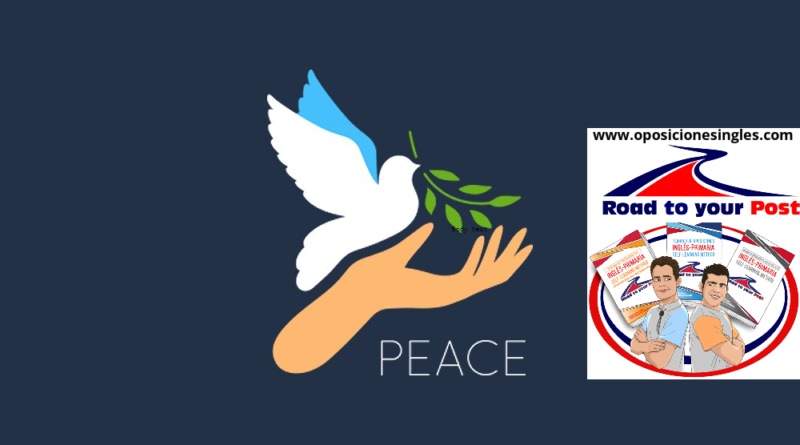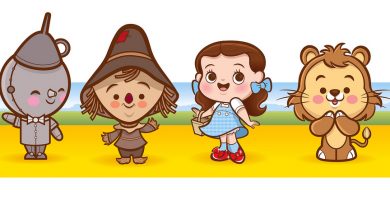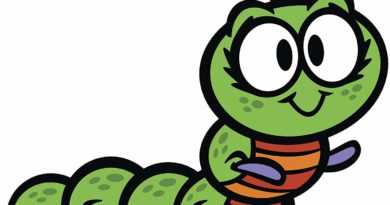LIVING PEACE DAY IN ENGLISH.
www.oposicionesingles.com
More information about us:
Google: «Road to your Post Lorca»
oposicionesingles.com
blog.oposicionesingles.com
facebook.com/OposicionesInglesRP/
twitter.com/OposIngles
Instagram: instagram.com/oposiciones_ingles
LIVING PEACE DAY IN ENGLISH.
American peace activist A. J. Muste said that “There is no way to peace, peace is the way”. Taking this striking sentence to schools’ reality, it is crystal clear that peace is an abstract concept which should be “learnt” in the context where children establish their first relations, face conflicts and learn to solve them peacefully. In this sense, every school represents a little society where children coexist and develop social abilities for their future lives. The celebration of Peace Day is, undoubtedly, an opportunity to instill positive values that will always accompany our students as part of their personality and, in all respects, may contribute to a better society.
Along this paper we shall design a series of original learning products for children in different levels, attempting to meet both the curricular requirements of the foreign language (FL) area, and also the hidden and implicit values that stem from such a celebration. However, let us start by justifying the relevance of this celebration according to the educational legal framework.
Understanding the nature of peace as a school issue implies recognising its prominent place according to most of the countries. The International Day of Peace (“Peace day”) was established by unanimous United Nations resolution, on 21 September to enhance the ideals of peace among all nations and peoples. Having this in mind, we can set sail with by bringing up a teaching perspective about peace, positive coexistence and how schools can promote a culture of peace. According to Caireta Sempere (2013), there are several skills in Key Competences that may be considered components of peace education:
- Ability to communicate in one´s mother tongue (i.e. to learn how to use dialogue and non-violent communication are key concepts in peace education); and in foreign languages, stressing the cultural value of diversity; and digital competence, interrelated with the previous one.
- Learning to learn, since peace is a process under constant construction that requires willingness and motivation to change and to improve, and through this competence children are challenged to overcome obstacles by learning to organise their own learning and sharing for mutual enrichment.
- Social and civic skills refer to personal abilities to negotiate non-violently, transforming conflicts through cooperation and assertive communication. The European Union defines civic skills as “knowledge of the concepts of democracy, justice, equality, citizenship and civil rights”. Finally, it promotes education for participation in civic action and solidarity and respect for human rights. Most of the content dealing with civic skills is related to peace education.
- Sense of initiative and the entrepreneurial spirit comes down to abilities to transform ideas into actions; it is linked to creativity the capacity to innovate and take risks. Eventually, the former characteristics are of great value to promote a culture of peace.
- Cultural awareness and expression is deeply concerned with peace education, because it develops creativity and people´s ability to communicate in different expressive languages, especially through emotions; and any instrument that increases communication and expression have a positive impact on peace education.
It is indispensable to understand that coordination on the part of the Cycle Teams is the first requirement to ensure a balanced and successful outcome. In this light, as part of the planning for the celebration, all teachers shall share their ideas to get to agreements and organise the previous tasks that eventually will lead to diverse products. Similarly, from a methodological viewpoint, cooperative learning is an engaging teaching strategy in which small groups work together towards a common goal. In this technique, each child is responsible for his own and the group´s progress (Kagan, 2013).
Following a descending path from general to specific, we shall now spell out the tasks suggested for the different grades.
Starting with the youngest students, grades 1 and 2, contextualizing the celebration with a story is a winning combination. The Peace Book by Todd Parr is perfectly adapted to the linguistic possibilities of these levels due to its visual power and simple but effective messages. Most pictures use simple structures (i.e. “Peace is making new friends”) and can be an ideal starting point to create some “Peace slogans” to decorate the walls, design the “Peacemakers rules” written on “Heart mobiles” (i.e. “Peacemakers are friendly”, “Peacemakers are kind and polite”). These tasks can be shared with the school community giving a leading role to the first graders, who can read some sentences they have learnt from the book. The Peace slogans can be displayed in the “peace corridor”, so that all children at school can read them to vote the most original, powerful and appealing messages. Finally, children in the first grade can read the most voted slogans during the whole school event, in which children present and resume their works.
For the students in grades 3, a calligram with the shape of a dove of peace or an acrostic poem (using the word PEACE) is elaborated in groups. This task demands guiding students and providing them with patterns and models, since their writing abilities are still limited. As previous activities to practise the target lexis, we get them find words related to peace in a wordsearch to subsequently play with these words through several games (i.e. “The peace pizza”, in which each child in the group is an “indispensable ingredient”, like friendship, help, respect, and the like; “Find the card” is a simple game where one child from each group compete to find the hidden card following “hot” or “cold” as only clues; “Peace bingo” which is played ticking the words that we listen in a simple song about peace: or “Odd one out”, where children identify a vocabulary item in a sequence that is different).
Students in grade four may assume the task of elaborating posters with basic information about relevant figures in history distinguished for their effort towards peace. In the previous procedure, we can briefly introduce characters like John Lennon, Mahatma Gandhi, Malala Yousafzai, Rigoberta Menchú, Mother Teresa of Calcutta or Martin Luther King. Afterwards, using the class tablets and some pre-selected sites (so as to ensure they will be able to cope with the linguistic demands in the texts), once the small groups have selected their character, they read and decide a few sentences to be written on the poster. The intention is not to write a full biography, but rather to include essential information or facts that spur interest among other children in the final presentation of the posters to the school community. This task can be recorded and shared in the school´s digital community, so that children present their own works
The fifth graders may have a central role by dramatizing a roleplay or a simulation. Obvious as it seems, this complex task requires careful preparation and rehearsal. Firstly, we can get them watch some inspiring YouTube videos like “What is peace?” or the hilarious performance by Robin William and the Two-headed monster in Sesame Street about conflict. The expected outcome in this task is a short sketch to be acted out for all children in the school´s celebration, thus, it should include some sense of humor and “punchy” dialogues. It is highly important to monitor children in groups in the construction of the script, giving ideas and adapting the ones they suggest, including not just the sentences but also some “performance aspects” like costumes, type of characters in the sketches. When they have all come up with their final version, it is time to rehearse and focus on language accuracy, pronunciation and “staging hints”. Likewise, they shall have a large audience in the school blog.
Many people think that music really bring people together. A prime example is the motto of Playing for Change: “Connecting the World Through Music”. In this case, the challenge for children in grade 6 is to write their own peace song, taking some of the videos by Playing for Change as an inspiration, like “Stand by Me”. In this particular cover, the lyrics were adapted: “no matter who you are… no matter how much money you got” prior to the original ones. And somehow this is what children are in charge of. In the first place, the whole class will vote for the song they want to “change”, maybe “Stand by Me”, due to its musical possibilities of simple adaptation to new messages; next, children brainstorm to come up with sentences related to peace and positive coexistence with the help of the teacher, being aware that they need to fix the music (i.e. “When you feel, alone; you can count on me, I´ll be there, as a friend, to comfort you”). When this process is finished, we can use a YouTube karaoke version as musical support and assign the lyrics. The intention is a choral performance where everyone takes active part within the whole group; therefore, we can divide the lyrics for children in pairs and rehearse with them. The result may be outstanding and, for sure, it will close the school´s peace day on a high note.
The next paragraphs concentrate on useful tasks to arouse ideas for the contribution of English to the celebration of special events:
- Special school days usually bring about the need to decorate the walls with samples of children´s works, related images and so on; in this sense, the contribution of each group must be appropriate to their level. Some examples may be displaying the world peace in different languages, paying special attention to the ones of children from other regions or countries at our school; images with real or fictional characters with a widely acknowledged significance for the topic; a wide poster with messages from all levels to improve peace and coexistence at school, etc. In this “decoration phase”, it may be beneficial to foster some kind of parental involvement by giving them some space to display their contribution to the project.
- Pay It Forward is the name of an emotional film where the main character is a boy who decides to improve the world by promoting “random acts of kindness”. This idea can be useful to challenge students to write sentences in English with positive acts that we can all carry out to improve peace and coexistence, like for example “talk to four people you don´t usually do”, “introduce yourself to children in lower grades, be nice and polite”.
- Create a “peace songs” playlist and make it grow with students´ investigations, so that children can listen at home and vote for their favourite one. Music is a language that all children like to know about, and thus a valuable context to build up multiple tasks.
- The number of animated stories we can find on YouTube is nearly endless, and there are lovely examples, like What does Peace feel like? by V. Radunsky, in which children reflect on questions like: What does peace smell like? What does peace look like? Or What does peace feel like? Another good example is “Peace Week in Miss Fox´s class” by Eilen Spinelli, a story the where the teacher announces “Peace Week”, tired of her young students´ quarrels. As we all know, using stories to teach a FL creates ideal learning contents for further outcomes that involve students´ productions, like acting out versions of the story in short plays, create “puppets companies” that perform their own stories for lower graders, or embark students on a “writing workshop” whose aim is to publish a comic series in the FL blog. In all cases, stories provide a meaningful starting point adaptable to any topic.
- Special events admit common tasks where all children at school can participate and, for example, send a personal message. This is what Peace means to us is important to build positive relationships with students. In this activity, they write positive messages related to peace. Using as the main character a Peace Dove, the aim is to draw a giant picture of a dove representing peace with little “dove messages”, where students write messages such as “Peace is caring for others”, “Peace is love to all”.
- A note on music is usually a welcome ally to bear in mind in English activities, not just because children love songs, which is a remarkable reason; with music we can take children anywhere due to its powerful contextualising value, as it happens with stories. Moreover, the vast array of themes makes them a versatile resource for any project.
To conclude with, English can be taught in plenty of different ways as long as we design motivating scenarios and pay attention to children´s interests. Moreover, a common school celebration like “Peace Day” can be an invaluable opportunity to arouse their creativity and engage them in challenging tasks. Far beyond the linguistic benefits that such celebrations may bring about, it is undeniable that there is a vast array of positive values that will remain and cause an influence of school coexistence. After all, there is no better way to change the world than following the path of peace.
https://www.youtube.com/watch?v=V8XsZ9uiz4U&t=15s by TheBackyardMenagerie
More information about us:
Google: «Road to your Post Lorca»
oposicionesingles.com
blog.oposicionesingles.com
facebook.com/OposicionesInglesRP/
twitter.com/OposIngles
Instagram: instagram.com/oposiciones_ingles



